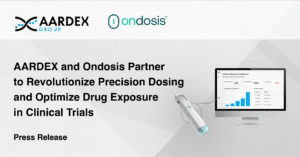With the current push for increased diversity in research, the medical community has accepted the challenge to make trial populations more representative of those in clinical practice. Yet poor medication adherence, which clouds the view of how drugs work in the real world, continues to grow as a significant problem which ultimately jeopardizes drug development.
Bernard Vrijens, CEO and scientific lead at Medication Adherence Technology experts AARDEX Group, questions whether Intention-to-Treat (ITT) analyses alone are sufficient to compensate for this deficiency. He also highlights additional actions that developers can take during trials to demonstrate effectiveness and provide a robust and patient-centered assessment of the efficacy and safety of their products.
Acceptable Variability?
The World Health Organization defines clinical trials as “research that studies new tests and treatments and evaluates their effects on human health outcomes.”1 For the results to be effective, the study conditions should closely mirror the real-world environment in which the product will be used.
In practice, this could not be further from the truth. Trials have strict eligibility criteria that often exclude people with comorbidities; they recruit from limited geographical areas and enroll a cohort that does not accurately represent the ethnic or socioeconomic background of the target patient population. Women, for example, have been consistently underrepresented in clinical trials.2 In short, trial participants and clinical practice populations do often not look alike.
Despite these obvious disparities, several players in the industry are still uncomfortable adopting technologies3 that have the potential to level the playing field.
Some argue that medication adherence technology, for instance, to measure medication adherence, is inappropriate as the approach would not necessarily be replicated in clinical practice. However, this is also true of pill count, a common adherence intervention in clinical trials that is rarely, if ever, carried over into the clinic. Drawing regular blood samples for pharmacokinetic (PK) or therapeutic drug monitoring (TDM) is also widely accepted in trials, having been recommended by the FDA, but is barely used in routine practice.
Away from the adherence question, it is not unusual for trial participants to have monthly, fortnightly, or even weekly appointments to monitor conditions that would only require an annual review in the real world. Such frequency of follow-up would simply be unaffordable for healthcare systems.
Given the inconsistencies in thinking around research versus real-world conditions, it seems there is a willingness to accept the contradictions of the past but a reluctance to implement new approaches or technologies that offer solutions.
A Question of Validity?
Medication adherence technology, such as medication adherence packaging and devices that automatically record dose administration and use analytics to highlight concerning patterns of adherence, are a proven and externally validated solution to a well-established problem.
Current figures show that by day 100 of a clinical trial, 20% of participants are “non-persistent” with their medication, and a further 12% display “suboptimal implementation”.4 This can drain study power, sometimes to the point of failure and represents a severe roadblock in drug development pipelines. After all, nothing will stop a drug from working like not taking it.
It is a problem that has been swept under the carpet for too long, but medication adherence technology can help. Of course, their use in clinical trials, much like pill count or TDM, may not always be continued into routine practice. But digital medication adherence technologies are a robust means of collecting exposure data that have unprecedented value in terms of reliability and granularity. Studies have shown that medication adherence package monitoring is 97% accurate, compared to 60% for pill counting, 50% for healthcare professional rating, and just 27% for self-report.5
Crucially, digital medication adherence technologies are a modern means of data collection that fits the needs of clinical trials in a digital world. Hailed to make research more inclusive, DCTs and hybrid trials replace at least a proportion of site visits with remote monitoring, and regulators have indicated they expect the data such studies collect to be more representative of the real world.6
Digital medication adherence technologies are crucial here because they reliably assess endpoints in the home setting to reveal the actual state of adherence. Medication adherence packaging will, for example, record doses across the entire 8,760 hours of a one-year study rather than from the relatively few hours spent with healthcare professionals on site. It provides an objective, fact-based, 360° view across the whole study and overcomes the inherent biases associated with white coat adherence and the subjectivity of self-reporting, for example.
Treatment Effect of Interest
If we truly want our clinical trials’ results to be useful in the real world, we must get a grip on adherence. We need to understand the proportion of adherent, less adherent, and non-adherent trial participants and how that affects study results and its impact on the choice of dosing regimens.
We also need to acknowledge that, without mitigation, poor adherence is a problem that will only get worse. The drive to make studies more representative of real-world populations means we will have fewer so-called “expert patients”, chosen by sites, partly because of their ability to follow the protocol. At the same time, while DCT and hybrid studies expand access to underserved groups, they also lessen investigator oversight. Taken together, these factors will inevitably lead to more variability in adherence.
As we move into this new world, developers need to ask themselves how they want to analyze their data and how they want to present it to regulators.
Based on ITT analysis, the traditional policy approach tells the story of how the product works “as prescribed” and averages across patients with good, sub-optimal, and poor adherence. There is an argument, however, that this no longer holds water. Firstly, it relies on selecting patients who are more likely to comply with the protocol and encouraging people to stay on track as suggested in the FDA “enrichment strategies” guidelines7. This gives assurance that patient safety is not in danger, but dose, administration, care, and safety profile would be based on a higher level of adherence than would be expected in the general population. 8
ITT analysis is acceptable in the presence of only minor protocol deviations. Yet, with overall poor adherence rates currently at around 30% in clinical trials,4 the calculations are inadequate to understand how products work individually and to ensure patient safety in the real world. They could, for example, feed into serious overestimations of the therapeutic dose, leading to possible side effects, intolerability, and treatment discontinuation in adherent patients.
In the presence of nonadherence, a “treatment as taken” approach, however, is a more patient-centered model that relies on an adherence-adjusted analysis to complement effects estimated from the ITT approach. Both the estimated effect of being assigned to a treatment (from an ITT-based analysis) and the estimated effect of full adherence to a treatment are useful to both clinicians and patients to fully understand the range of potential treatment effects, both in terms of efficacy and safety.
Driven by the granular, holistic adherence data digital medication adherence technologies generate, this method, combined with advanced statistical analysis (e.g., Marginal Structural Models), allows analysts to estimate treatment effect of full adherence and deviations thereof rather than an average across the board. It offers a more realistic view of how products may be used in the real world, leads to fully informed risk/benefit profiles, enables the design of safer dosing regimens – and allows developers to demonstrate all of this to regulators.9
In line with the guidance of ICH E9 (R1), to properly inform decision-making by pharmaceutical companies, regulators, patients, physicians, and other stakeholders, clear descriptions of the benefits and risks of a treatment (medicine) for a given medical condition should be made available.10
In modern drug development, we would argue that a data-driven, patient-centered “treatment as taken” approach is the only way to truly estimate efficacy when the drug is taken correctly – and ensure drug products are effective, efficacious, and safe in real-world populations.
References
- Clinical trials. (n.d.). World Health Organization. Available at: https://www.who.int/health-topics/clinical-trialsLast accessed: 16 November 2022.
- Bierer, B. E., & Meloney, L. G. (2022). Strategies to optimize inclusion of women in multi-national clinical trials. Contemporary Clinical Trials, 117, 106770.
- Cross, N., Kipentzoglou, N., Whitehouse, J., & Satherley, A. (2022). POSB278 Modernising the Clinical Trial: A Shift to Decentralised Trials Driven By Advances in Technology and Catalysed By the COVID-19 Pandemic. Value in Health, 25(1), S181.
- Eliasson, L., Clifford, S., Mulick, A., Jackson, C., & Vrijens, B. (2020). How the EMERGE guideline on medication adherence can improve the quality of clinical trials. British Journal of Clinical Pharmacology, 86(4), 687-697.
- El Alili, M., Vrijens, B., Demonceau, J., Evers, S. M., & Hiligsmann, M. (2016). A scoping review of studies comparing the medication event monitoring system (MEMS) with alternative methods for measuring medication adherence. British journal of clinical pharmacology, 82(1), 268-279.
- de Jong, A. J., van Rijssel, T. I., Zuidgeest, M. G., van Thiel, G. J., Askin, S., Fons‐Martínez, J., … & Trials@ Home Consortium. (2022). Opportunities and Challenges for Decentralized Clinical Trials: European Regulators’ Perspective. Clinical Pharmacology & Therapeutics.
- US Food and Drug Administration. (2019). Enrichment strategies for clinical trials to support determination of effectiveness of human drugs and biological products guidance for industry. Available at: https://www.fda.gov/regulatory-information/search-fda-guidance-documents/enrichment-strategies-clinical-trials-support-approval-human-drugs-and-biological-products Last accessed: 20 December 2022.
- Smith, DL. (2012). Patient nonadherence in clinical trials: Could there be a link to postmarketing patient safety? Drug Inf J, 46(1), 27-34.
- Hernan MA et al. Clin Trials. 2012 ; 9(1) : 48-55, Detry MA et al. JAMA. 2014 ; 312(1) :85-6, Hernan MA et al. NEJM. 2017 ; 377(4) 1391-8, Smith VA et al. 2021 ; 326(5) : 433-4
- US Food and Drug Administration. (2021). E9(R1) Statistical Principles for Clinical Trials: Addendum: Estimands and Sensitivity Analysis in Clinical Trials. Available at: https://www.fda.gov/regulatory-information/search-fda-guidance-documents/e9r1-statistical-principles-clinical-trials-addendum-estimands-and-sensitivity-analysis-clinical Last accessed: 20 December 2022.



